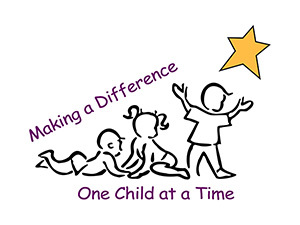Occupational Therapy
What is occupational therapy and why do children need occupational therapy or OT?
Occupation is not only someone’s job but it is also the daily activities that people and children participate in. Occupation involves the person, their community, and their environment. All people need to be able or enabled to engage in occupations of their need and choice, to grow and learn through what they do, and to experience independence or interdependence, equality, participation, security, health, and well-being.
Children’s occupations include sleep, play, school, and self-cares such as dressing/undressing, washing hands/body, toileting, and eating/feeding. An occupational therapist is trained in activity analysis which breaks down specific occupations into three areas:
- Activity demands: objects used, space demands, social demands, sequencing and timing, required actions, required body functions, and required body structures.
- Performance skills: sensory perceptual skills, motor and praxis skills, emotional regulation skills, cognitive skills, and communication and social skills.
- Performance patterns: habits, routines, roles, and rituals.
Activity analysis assists in developing treatment plans to address the difficulty keeping the child from being successful. For example, a child who is choking at mealtimes on baby cereal and becomes increasingly fussy when sat in a high chair may lack the postural stability to be able to hold their head up straight and control their tongue movements to allow controlled swallowing. Treatment planning would include supports added to the seat to help keep the child’s head in midline and postural strengthening with tummy time activities. Activity analysis for children with sensory integration difficulties or SID (Sensory Integration Disorder) helps to identify modifications or specific activities a child needs to be successful and independent. The categories of sensory function include the following: tactile (touch), auditory (hearing), visual (sight), taste, olfactory (smell), vestibular (movement and gravity), and proprioceptive (body awareness, muscles, and joints). Occupational Therapy helps children to organize and process sensory messages so that they can be successful in everyday activities.
Skilled occupational therapy services at Child Development Services utilizes the integration of information from three sources: 1) clinical experience and reasoning, 2) preferences of clients and their families, and 3) findings from the best available research. If a child qualifies for OT Services through the developmental screening and evaluation process, those services will be provided by an Occupational Therapist or Certified Occupational Therapy Assistant in a child’s natural environment. For children ages birth through two years this is usually the home or a childcare setting. For children ages three through five years it is often a preschool or other educational setting. The goal of Occupational Therapy is to develop or improve a child’s skills for daily living and independence.
We look forward to providing the community of Fremont County quality services and to see the children of our community develop skills that promote participation and wellness in all of their occupations.
